There seems to be no area of scientific invention anymore that doesn’t provide the perfect backdrop for breathtaking cinematic stories about the geniuses that have invented things, which we couldn’t imagine living without today.
World cinema is witnessing a real renaissance of biographical films. Biographies of historical figures are being screened (Oppenheimer is still on the screens, as well as historical dramas, Jeanne du Barry, and Ridley Scott’s Napoleon), filmmakers in particular have taken a liking to stories about athletes, inventors, and founders of famous business brands.
Here are ten great biopics about famous global brands.

10. The Founder (2016)
Whether we like it or not, the fast-food brand McDonald’s is a widely known name. Even for those who have never been there.
McDonald’s is a modern phenomenon that has challenged and won the battle against the long-established luxury restaurant business. Instead of refined menus of flavors, it has offered people a range of quick-prepped meals, the most iconic item being a bun with a meat patty inside, a packet of fries and, of course, a cup of Coca-Cola.
Director John Lee Hancock is no stranger to biographical cinema. His film The Rookie (2002) was about the famous baseball coach Jimmy Morris (played by Dennis Quaid). The Blind Side (2009) was another sports drama, this time about the unlikely fate of American football star Michael Oher (Sandra Bullock, who played his coach, won an Oscar).
In the hilarious biopic Saving Mr. Banks (2013), Tom Hanks (who, by the way, looks a lot like his prototype) played the legendary film-maker Walt Disney.
The Founder tells the story of the man who founded the McDonald’s empire. I bet that if you asked on the street who founded McDonald’s, the world’s most famous fast-food chain, it would probably be McDonald. That will be only a small part of the truth. Because two McDonald brothers (Dick and Maurice) in the small Californian town of San Bernardino were very inventive in the way they sold hamburgers in their snack bar. To expand their fast-food burger ration, they once ordered a batch of milkshake mixers, which had been marketed, not very successfully, by an American named Ray Kroc (played by Michael Keaton).
After meeting the brothers, Ray quickly realizes that he needs to act. So, he volunteered to become a partner in expanding the business outside San Bernardino. Soon after, he pulled an old trick that put the whole business in his hands.
We often hear about variations on the American dream. In Hollywood films, we see similar stories. They are usually about people who, thanks to their talents or abilities in science, sport, politics, or other fields, have made astonishing careers or enormous fortunes.
The Founder is an illustration of the latter point. Unfortunately, this time it is about a different kind of cleverness, where lies, deceit and cynicism are used to hijack someone else’s business and marginalize its true founders.
This is not an uncommon phenomenon in real life either. Not everyone condemns the predatory principle of “the end justifies the means”. For some, it’s more important that pecunia non olet (eng. money does not stink)…
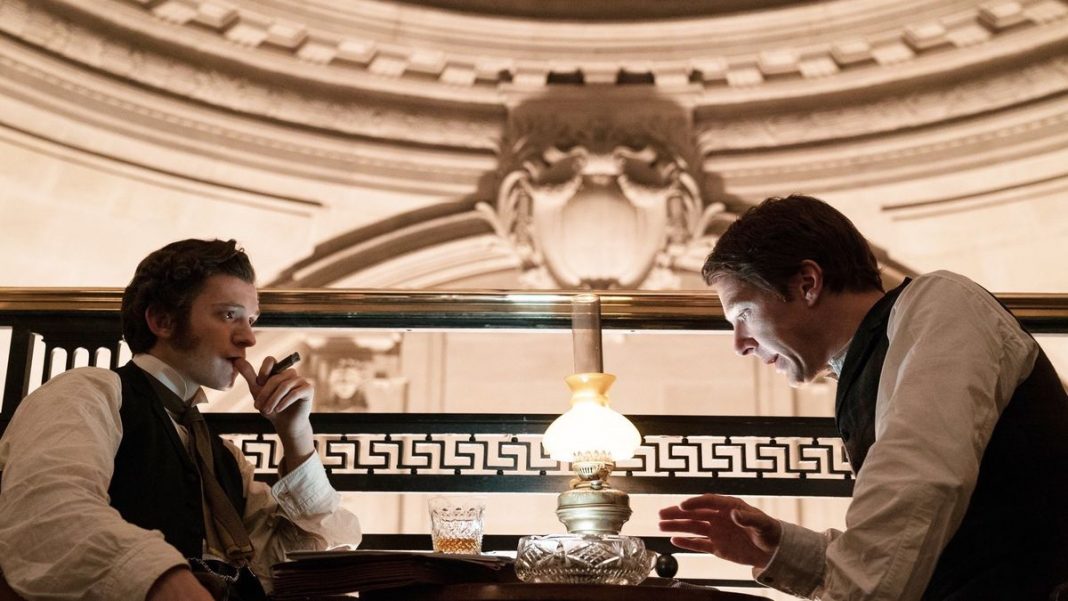
9. The Current War (2017)
“In 1889, the Italian Pavilion at the Paris International Exhibition featured a statue of a young woman with wings climbing on the wreckage of a gas lamp, surrounded by a cogwheel, a telegraph machine, an electric arc, and a telephone, all carved from Carrara marble. This symbolic figure held a light bulb in its outstretched hand. On the pedestal of the statue was the inscription Triumph of Electricity”.
With these words, Georges Sadoul, author of Histoire générale du cinema (eng. History of Cinema), introduces Tome I, Chapter VIII, “Edison, Inventor of Motion Pictures”.
Thomas Edison, who visited the exhibition, was so struck by the allegory that he bought the statue, intending to find a place of honor for it in the new laboratories being built by West Orange. For the triumph of electricity was also Edison’s own personal triumph.
In fact, Thomas Edison, “the greatest inventor of all time” (as Albert Einstein called him), is primarily associated with electricity and cinema. Even if he left many more famous inventions to humanity. According to Wikipedia, Edison was “One of the most prolific inventors who patented 1093 inventions in his name”).
Alfonso Gomez-Rejon’s feature film The Current War tells the story of the time when Thomas Edison (played by Benedict Cumberbatch) focused all his innovative energy on trying to electrify America.
The film covers the historical period from 1880 to 1893. The tense action is driven forward by the long-running conflicts between Thomas Edison and his main rival, the physicist George Westinghouse (played by Michael Shannon).
Edison’s patent for a continuous power distribution system led to more people wanting to improve it, including George Westinghouse and Nikola Tesla, who developed their own alternating power distribution system. Choosing a single electricity transmission system was necessary because the use of different methods and devices increased costs and was a real headache not only for companies but also for the states. This is what provoked the so-called ‘current war’.
The third participant in this war, Nikola Tesla (played by Nicholas Holt), is given little space in the film, and the main antagonists are the representatives of two completely different scientific concepts: Edison was developing and refining the continuous electrical transmission system, while Westinghouse was laying the foundations for the much more advanced alternating electrical transmission system.
The war officially ended more than a hundred years later, it was only in 2007 that the Edison’s method was finally abandoned, and the last permanent power cable that was still in operation at the time was ceremoniously crossed in New York.
“Many overlook opportunities that are favorable because they often come dressed in work clothes and resemble ordinary work,” as Thomas Edison once put it. With his extraordinary talent and entrepreneurial spirit, he was acutely aware of the immeasurable possibilities that the artificial light from the light bulb would bring to the world of tomorrow. It was like a miracle and a realization that the advent of artificial light was a very powerful and significant step forward that could change the future of humanity.
Arrogant and self-confident, Edison unsparingly criticizes the electricity transmission system developed by Tesla and Westinghouse and launches a propaganda campaign: commissioned articles appear in the press about the deaths of people in the vicinity of high-voltage alternating-current substations in New York City and elsewhere in the US.
War is war, all means are righteous! There is no shying away from blackening the personalities of competitors, publicizing extremely sensitive information about their private lives, organizing open attacks and even sabotage. Edison’s methods go beyond common sense: he uses a straw to torture animals with alternating electric currents, and even builds an electric chair for the “humane” killing of criminals.
The Current War has struggled to find its way onto screens. The project was completed way back in 2017. However, the premiere was held up by full-blown sexual scandals over the inappropriate behavior of producer H. Weinstein. Things moved forward when Martin Scorsese joined the project.
Unfortunately, the film did not live up to its financial expectations (it costed 30 million to make, but only collected 12 million). Critics did not miss the opportunity to ironize that a film about electricity lacked “high voltage”.

8. Steve Jobs (2015)
Not that long ago, Steve Jobs, one of the most famous business geniuses, was hailed by the media as the Leonardo Da Vinci of our time.
On the fourth anniversary of Jobs’ death, his second feature biography film was released.
Jobs had many names even before his death: an icon of the technological age, the founder of the world’s most expensive brand, a perfectionist with no rules, a genius with crazy ambitions, and an egoist who only listens to his own opinions. He could fire a worker in an elevator in seconds, but the same evening he would cause a hysterical scandal if he didn’t get a table in his favorite restaurant. He kicked a pregnant woman out of her house, saying he was the last person on earth who could father her child, but years later he acknowledged his daughter, talked to her regularly on the phone, paid for her college education and named one of his projects after her.
For some people, Jobs is an idea thief and tyrant, for others an unquestioned genius and teacher. How did a rebellious hippy, who tried drugs as a young man, dropped out of college, and managed to build one of the world’s biggest business empires without a penny in his pocket?
Director Joshua Michael Stern and actor Ashton Kutcher tried to answer these and similar questions two years ago, but their film with the laconic title Jobs (2013) was deservedly dismissed as lame and very superficial.
When asked at a press conference in New York in 2015 how he managed to impersonate Jobs, Fassbender, 38, jokingly replied that he had studied the work of his colleague, Kutcher, and learned from him, but that he wasn’t afraid of the friendly competition: “Obviously, I don’t look like Jobs. That was the first thing I said to director Danny Boyle”.
Yet Boyle was not the least bit upset. He thinks that is exactly the strength of the new film. He said that Fassbender has succeeded in capturing the essence of the man and in conveying it convincingly. It seems that the director is right. Steve Jobs is already in the predictions for the new awards season, and Fassbender’s partner Kate Winslet (played Jobs’ co-worker Joanna Hoffman, who had a long friendship with the Apple founder) said at the New York Film Festival: “He’s an extraordinary actor, I’ve never seen such a professional, he was just amazing”.
Based on Walter Isaacson’s book, the film focuses on three major events in Jobs’ life: the introduction of the Macintosh personal computer in 1984, the NeXt release four years later and, of course, the launch of the iMac in 1998, which was his crowning triumph. Alongside these world-changing achievements, the film tells the story of the computer genius’s complex relationships with his co-workers, friends, relatives and his daughter, Lisa, who for a very long time Jobs was reluctant to acknowledge, even though a DNA test had proved his paternity.
Nowadays it’s hard to imagine that we could live without “toys” like the iMac, iPod, and iPhone. Jobs presented each of these inventions as a new breakthrough into the future, and he did so with great elegance. He was full of paradoxes and believed himself to have become one of the greatest leaders of his era. As a result, he sometimes behaved like a capricious god, convinced of his unapologetic righteousness. Director Boyle finds apt metaphors for these character traits, both in Macintosh’s presentation in 1984 and in the scene with the philharmonic orchestra, where the association with the conductor is very straightforward: in the same way, Jobs ‘conducts’ the processes around him, where not only his every word counts, but his every gesture.
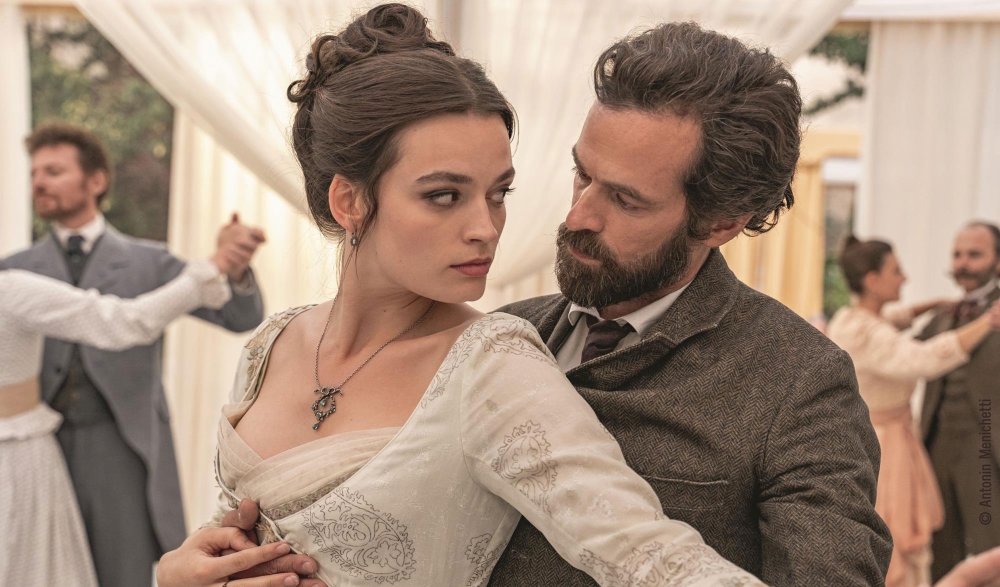
7. Eiffel (2021)
French engineer Gustave Eiffel became a global celebrity even before his most significant work, the tower bearing his name, was completed in Paris in 1889 and became the highlight of the Exposition Universelle. It was then thought to be a temporary structure, to be dismantled after 25 years, when all the work would have paid for itself in ticket sales to visitors.
Nearly eight million francs paid off during the exhibition period alone, the continued maintenance of the tower has become a profitable business, and the tower is still one of the most photographed and visited sites today.
Now it is hard to picture how this symbol of Paris used to make the artistic society of France nervous at the time. In 1887, while the tower was still under construction, as many as 300 artists (including the writers Alexandre Dumas and Guy de Maupassant, the composer Charles Gounod, etc.) sent a collective letter of protest to the Mayor of Paris, calling the construction “senseless and horrible” and the tower itself “a laughingstock that dominates Paris like a factory chimney”.
There is a nice legend that Guy de Maupassant supposedly replied to the question why he liked to dine in the restaurant on the second floor of the tower: “Because it’s the only place in the huge city of Paris where you can’t see this hideous monstrosity”.
It is not surprising to find a film set in Paris that does not feature the Eiffel Tower in at least one frame, or even in a distant cityscape.
Sometimes the tower itself has become a major film set. Back in the days of silent cinema, crime and even mystery stories were set here. For example, in René Clair’s surrealist film The Crazy Ray (1924), or Julien Duvivier’s mystical adventure story The Mystery of the Eiffel Tower (1927), where a breathtaking chase is filmed on the tower’s stairs and ironwork.
The genius engineer himself has long been asking for his own film (in addition to the tower that made his name known, France still has several train bridges built by him, and New York’s famous Statue of Liberty is also Eiffel’s gift to the Americans). Such a film has recently been made. Only it seems that for its director, Martin Bourboulon, the life of the genius constructor and the construction of the tower have become the perfect pretext to create another French adventure melodrama about unrequited love.
The opening credits of the film inform viewers that they are invited to watch a “free interpretation of real events”. The audience is thus warned not to look for the authenticity of historical facts in the film. This is a common practice in world cinema, for example in the seven Oscar-winning American costume drama Shakespeare in Love (1998), whose authors fantasize no worse than Shakespeare himself.
The creators of Eiffel are not shy either. We meet the protagonist in 1886, when Eiffel (played by Romain Duris) was a widower with five children. He had already been awarded a medal by the Americans for the grandiose Statue of Liberty and was now obsessed with the idea of building a metro in Paris. But that would require huge funds, which only the government could provide.
An official visit to the Minister of Transport leads to another fateful encounter with the beautiful Adrienne Bourgès (Emma Mackey), whom Gustave hasn’t seen for twenty years and who is now the wife of a friend from his youth.
As the table of distinguished guests begins to talk about the forthcoming scientific exhibition, Eiffel loudly announces (not so much to impress the Minister, but to impress Adrienne, it seems!) that he is capable of constructing a tower as high as 300 meters.
From this point on, two stories begin: the construction of the tower (complicated by the intrigues of the jealous, who almost ruined the financing of the work), and the story of Gustave and Adrienne’s relationship, starting with their long-ago acquaintance in Bordeaux, where Eiffel was building a bridge over the Garonne River two decades ago.
The film had a budget of €75 million, and it is a rare case where you don’t need an audit to make sure that the money has been well spent (grandiose sets, luxurious costumes, beautiful clothes and, of course, amazing CGI effects (which, in this case, were really necessary for the filmmakers to be able to re-create the Paris of more than 130 years ago).
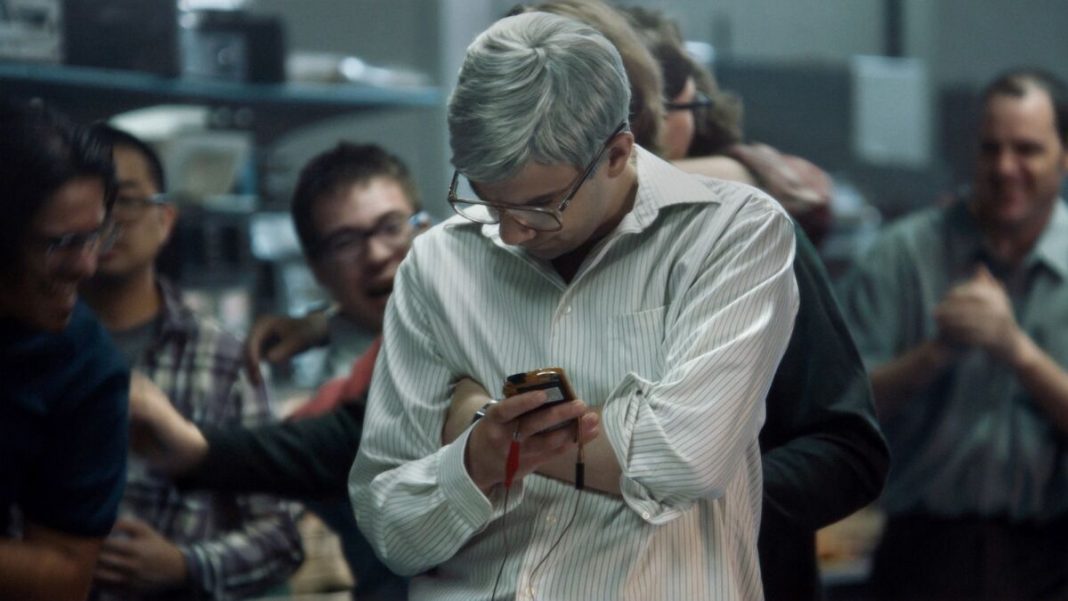
6. BlackBerry (2023)
Mobile phones are one of those areas where progress is made in leaps and bounds, and it is impossible to track down technologies that are updated many times a year, nor to purchase devices that are still being improved each year.
Director Matt Johnson’s latest work, BlackBerry, tells the story of a modern technology legend, the ‘BlackBerry’, one of the first widely used smartphones. With huge competition in the field of communication technology, it is difficult to stay relevant, even for those who were early pioneers. Sometimes a meteoric rise to the top is followed by a painful fall.
That’s exactly what happened to the BlackBerry brand. There was a time when everyone dreamed of having a smartphone with a keyboard that could write emails, and all self-respecting businessmen had one. And just when it seemed like the whole world was in the pocket of the makers of such a phone, along came Steve Jobs with his iPhone. One mistake, a prideful attachment to the technology, a failure to join the competition in time and to reach an agreement with the mobile operators, and you go from almost 50% of the smartphone market in the US and billions of dollars a year to zero.
Based on the book Losing the Signal: The Untold Story Behind the Extraordinary Rise and Spectacular Fall of BlackBerry, the film premiered at the Berlin International Film Festival and was praised by film critics, audiences and even technology experts alike. “It’s rare to see films like this”, said the audience after the premiere. Some compared the film to Martin Scorsese’s The Wolf of Wall Street, others to David Fincher’s The Social Network.
In truth, all these films have in common the flamboyance of the writers and actors, black humor, ironic take on the rules of Silicon Valley, and the quirks of innovators. But at the same time, BlackBerry is an intriguing, breathtaking thriller that reveals behind-the-scenes of the technology and telecom business.
Who will be better at selling an unknown technology to competitors: a talented engineer or a nerdy Harvard Business School graduate? How do you lure talent from Google or Microsoft? How to conquer the smartphone market? All these questions are now as important as the inventions themselves.
The film starts with two Canadian engineers, Mike Lazaridis (Jay Baruchel) and Douglas Fregin (played by the film’s director Matt Johnson), co-founders of the technology company Research In Motion, meeting with business shark Jim Balsillie (Glenn Howerton) to pitch a new idea. “50% of the company and I’m CEO”, he replies.
Balsillie’s activities are particularly tumultuous when he loses his former job. His experience and good knowledge of his field quickly yields a remarkable result: a successful start-up RIM becomes a major breakthrough in the telecommunications market. The audience is treated to yet another well-crafted film in which the production processes and the myriad behind-the-scenes details of the business do not overshadow the characters themselves, most of whom are portrayed as fanatics of ideas who sacrifice their personal lives for the cause. But without such fanatics no progress would be possible.

5. Air (2023)
This 2023 film shows how two different worlds, sport and business, can come together to create something truly special. It’s a story that will inspire, remind you of the power of perseverance and hard work, and encourage you to take risks and do what you believe in.
Nike, or rather Blue Ribbon Sports as it was originally called, was founded in 1964. The company was initially set up as the official distributor of Japanese running shoes in the USA and sold around 1 300 pairs of shoes in its first year of operation. The beginning was difficult. With no official sales premises, the company’s founders Bill Bowerman and his pupil Phil Knight were forced to sell trainers simply out of the trunks of cars.
Even when it had no official sales outlet, sales were quite good and the founders even managed to raise enough revenue to hire their first permanent employee in 1965. The first Nike retail store opened in 1966 on Pico Boulevard in Santa Monica, California. As sales continued to grow, the company’s owners expanded its operations to the American coast in Wellesley, Massachusetts. The company continued to grow and spread not only in America, but all over the world.
That’s the Nike story, but that’s not what this film is about. Air is a one hour and 52 minute long film about how Nike signed the most valuable deal of all time with Michael Jordan. Meanwhile, the hearts of American athletes were being captured by the German Adidas and another American company, Converse. Nike, therefore, had to make a special effort to rise up. In this respect, all the credit goes to Sonny Vaccaro, who was working in Nike‘s sports department at the time specifically to help in the basketball field, and who had the idea of proposing to the then rising basketball player Michael Jordan to sign a contract with Nike, because he saw his great potential on the basketball court. This idea was opposed by everyone who could, but Sonny was not deterred. Even though we all know the ending of this film when we watch it, the time does not drag on.
Director Ben Affleck at the premiere of the film at the South by Southwest Film & TV Festival in Austin, Texas, said it was the most important night of his life: “Tonight is the most important night of my career,” he told the crowd.
One of the most impressive aspects of Air is its attention to detail, as it perfectly captures the 80s. The scenery, the costumes, the make-up, everything looks flawless. The film also features classic 80s hits such as Toto’s “Africa”, New Edition’s “Candy Girl” and Van Halen’s “Jump”, which makes you want to sway to the beat even more.
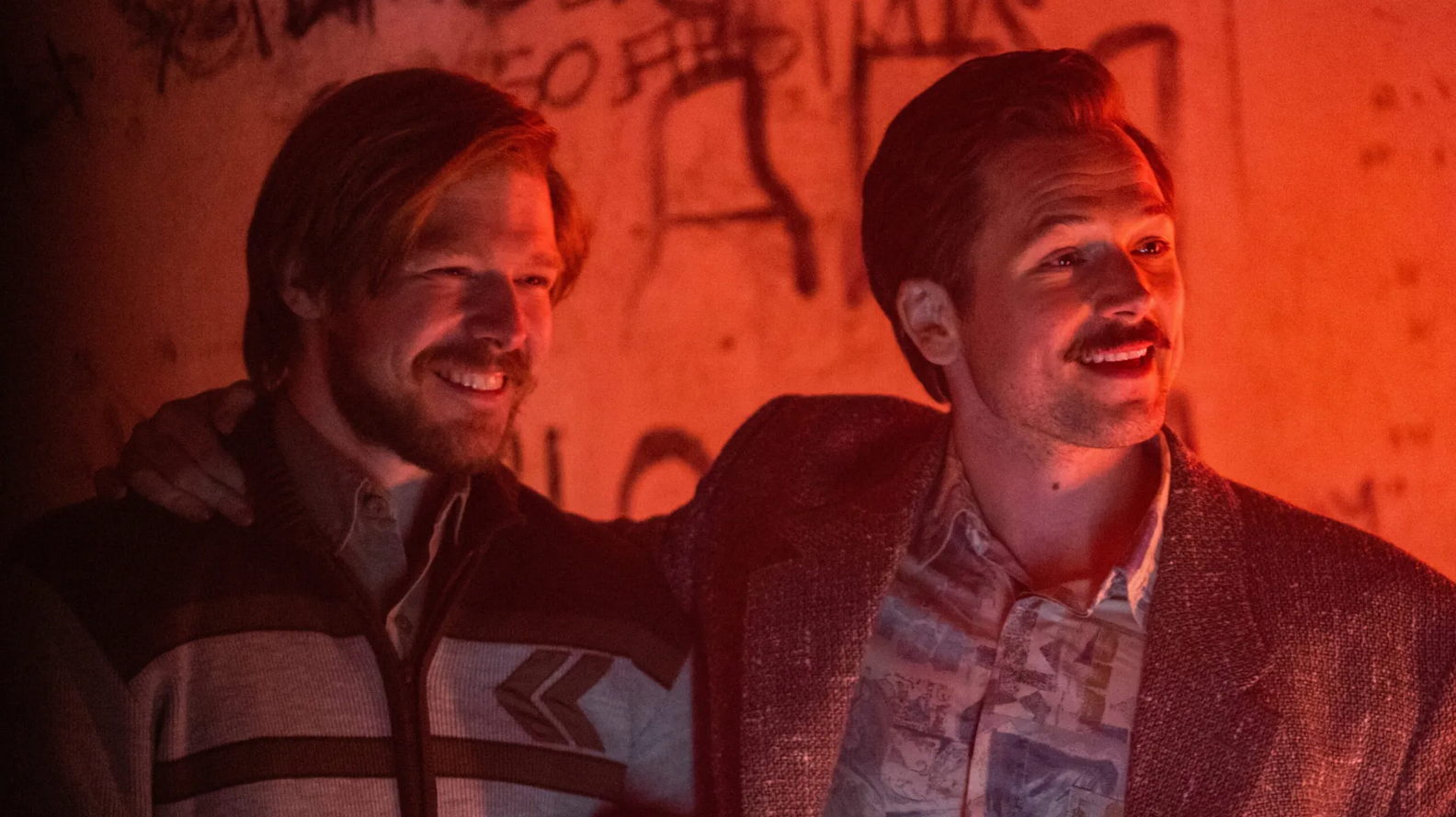
4. Tetris (2023)
2023 marks the release of Tetris, the long-awaited film from Apple TV+ and director Jon S. Baird, which tells the story of the creation of one of the world’s most popular video games, and the challenges of bringing it to a wider audience from behind the iron curtain. It’s a biographical story of strength, determination, and immense faith in what you do, with the main focus on the copyright and release of the game to global markets.
The puzzle game Tetris first hit the American market in 1989 with the release of Nintendo’s new Game Boy handheld console, hence its close association with the company. In spite of that, only a few people know the real story behind this globally popular game.
Tetris first appeared in Moscow, at this time still former Soviet Union, in 1985. Its creator, computer systems engineer Alexey Pajitnov, was working at the Dorodnitsyn Computing Centre, now the Computing Centre of the Academy of Sciences. His liking for puzzles and his strong fascination with the aesthetic and mathematical possibilities of geometric shapes inspired him to create a game of falling shapes, always made up of four squares, also known as tetrominoes.
Pajitnov’s game, although very simple but intriguing, quickly spread among his colleagues and friends, catching the eye of those around him working in the games industry. And so, begins the almost two-hour story of how a game developer named Henk Rogers, simply mesmerized by this hypnotizing new game, risks everything to publish it, that is, to obtain international licensing rights, outside the Soviet Union. Not only does he have to look for partners, compete with one of the biggest video game licensing and publishing companies of that time, but he also has to go to Moscow and negotiate with the local bureaucrats and the KGB.
Director Jon S. Baird, together with the rest of the cast and crew, perfectly recreated the aesthetics of the 1980s and further enhanced it with the soundtrack, in which some of the most popular American songs of the time were rendered into Russian. The intense plot and the use of visual effects and jokes at certain points kept the audience glued to the screens and unable to take a breather until the end of the movie. Most importantly, Tetris not only tells the story of the origins and publication of the game itself, but also recalls the tensions between East and West during the Cold War, which is essentially what led to the competition for the rights to the game in the first place, and the collapse of the Soviet Union. The tape captures the essence of that period when video games were just beginning to rise to the top and everyone was dreaming of changing the world in one way or another.

3. House of Gucci (2021)
At 84 years old, British cinema classic Ridley Scott is in great physical shape and still able to surprise more than just his most loyal fans.
Adam Driver, who has certainly been getting a lot of invitations lately, is also starring in Scott’s latest film, House of Gucci, though it’s not him but pop goddess Lady Gaga who is still the most relevant topic to the press.
The main characters of the film are the protagonists of the haute couture world, the owners of one of the most important prêt-à-porter brands and the leaders of a powerful fashion empire. Adam Driver plays Maurice Gucci, the heir to the famous business, and Lady Gaga plays his wife, who hired the assassin who shot her husband on the stairs on his way to the office in 1995.
Found guilty in court, Patricia Reggiani spent 18 years in prison and was only released in 2016, earning her the nickname Black Widow.
The fact that this is not supposed to be a colorful, rosy report on the life of an artistic bohemian is proved by the literary source that has already been used as the basis for the script, Sara Gay Forden’s The House of Gucci: A Sensational Story of Murder, Madness, Glamour, and Greed.
Spanning three decades, the film is full of love, betrayal, revenge, and finally ends with a murder, after which the family business, that has been nurtured for almost a hundred years, will be taken over by the heads of Bahrain corporation.
Though the plot is centered on a high-profile murder, House of Gucci is not a crime thriller. Rather, it is a film that shows the theme of human greed, which is prominent in All the Money in the World.
The film has become a significant event not only in the world of cinema is proved by the disgusted and angry reactions of the fashion house. The claims of the famous family are now being widely discussed in the press: even the actors Al Pacino (who played Aldo Gucci) and Jared Leto (Paolo Gucci) are not suitable for them.
If the outraged rich make good on their threats to defend their honor and dignity in the courts, we are in for an intriguing soap opera. It will be a win-win situation for everyone, people will be treated to a racy multi-series entertainment on bleak winter evenings, and the financial benefits will be felt most by who?… That’s right, the sellers of fashionable accessories and dresses.
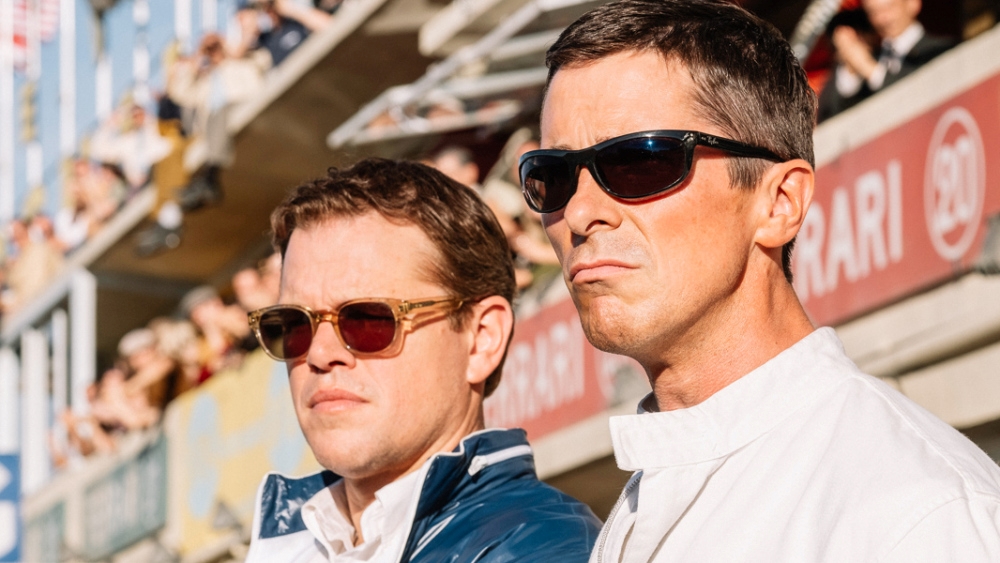
2. Ford v Ferrari (2019)
Ford v Ferrari is about the “duel of the century”, when two drivers, Ford and Ferrari, competed in motor racing.
This conflict started in the 1960s. For six consecutive years, since 1960, the Ferrari cars were unbeatable at Le Mans. This could not fail to offend the ambitions of Henry Ford’s imperial leaders, who had long been accustomed to leadership in the car industry. In the beginning, the Americans tried to deal with the situation as big capitalists or mobsters do: simply buy the business of their competitors. No matter how, the Europeans were not tempted by this “offer that could not be refused”, because they regarded the rich US monopolists not so much with jealousy as with undisguised contempt, since they were convinced that for the big-capital American “sharks”, profit was more important than anything else, and that for the Europeans, the Le Mans competition was primarily a triumph of man (and not of technique).
Therefore, Henry Ford II (played by Tracy Letts in the film), the then head of the company, decided to challenge the king of track racing with the heavy artillery of big money and the most resourceful engineers in his firm, the only American to win the race, Carroll Shelby (Matt Damon), forced to retrain as an engineer because of heart problems, and Ken Miles (Christian Bale), a hard-driving racer brought over from Britain. The latter circumstance guarantees all sorts of psychological conflicts which, together with the production problems, promise to become a sinister explosive outcome.
The plans are ambitious and the time to realize them is very short, just 90 days.
This was the start of the realization of yet another “American dream”. Often these are cinematically embodied stories written by screenwriters, with dramatic conflicts, duels between contradictory characters, heroic feats on the edge of human capabilities and the obligatory final triumph. This time it was not necessary to make up much: the creation of the Ford GT40 Mk II racing car was not lacking in real challenges; exhausting work, stormy arguments and moments of frustration, sleepless nights, bursts of rage provoked by fatigue and similar emotions, which are helpfully provided by an extreme life “on the verge of a nervous breakdown limits”.
It is this “manufacturing” background that plays the key role in the filmmakers’ saga. Director James Mangold skillfully combines the episodes of the preparatory phase into a chain of rather dramatic events but begins to edit the most important episodes of the race film (with great virtuosity) in the last third of the film.
Christian Bale, starring in his second James Mangold film (after the western 3:10 to Yuma, in 2007), once again demonstrates not only his talent for reincarnation, but also an incredible physical transformation, having lost 20 kilos in preparation to play Ken Miles (compare Christian Bale in this film and Vice (2018), and you won’t find more than five similarities in appearance).
Anyone who is even slightly interested in motor sports knows that the duel between Ford and Ferrari, which after enormous sacrifices and the use of limited human resources in the famous 24-hour car race in 1966, ended with a crushing victory for Ford.
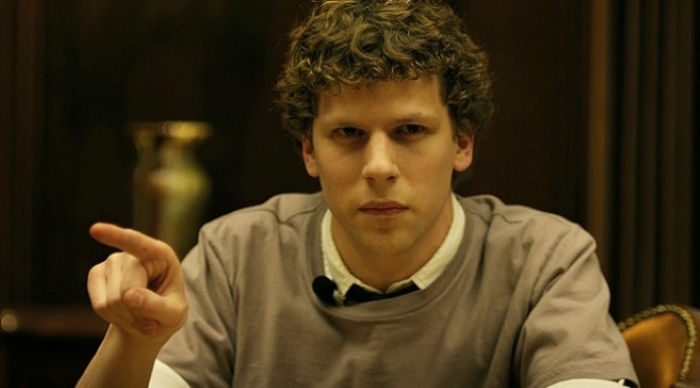
1. The Social Network (2010)
When the film was released, Americans joked that at least 500 million people should have watched The Social Network, roughly the number of people who were active on the online platform Facebook during that time.
The computer programming business is now deservedly overtaking all traditional forms of get-rich-quick schemes. No oil industry or diamond mining business can compete with the possibility of becoming an instant billionaire by introducing a new computer operating system that will spread like a wildfire on the internet and draw hundreds of millions of users into its spider’s web. Apple, Microsoft, or Google are nowadays not the only famous brands but also symbols of fantastic success.
The Social Network is based on Ben Mezrich’s book The Accidental Billionaires. But neither the author of the novel nor the alleged programming genius Mark Zuckerberg have seen the film. No Facebook executives have been involved in the making of the film. There is a kind of symbolism in this paradox. After all, being on Facebook allows people to communicate and keep their distance at the same time.
The main character of the film is Mark Zuckerberg (Jesse Eisenberg), who has become the world’s youngest billionaire. His recipe for success is brilliantly simple: a person who doesn’t fit in with others, an awkward guy who has offered people a modern way of communicating. The fruits of this intellectual revolution are now enjoyed by millions, but of course there are also those who would like to share not only his fame, but also his money.
Ben Mezrich’s book, on which the film is based, consists of the claims of Mark Zuckerberg’s closest classmates from Harvard University against his former friend for allegedly misappropriating a common idea and not properly sharing the material results of the victory with anyone. The filmmakers follow a similar path, devoting a lot of space to legal battles, returning to the past and searching for objective truth.
The real Mark Zuckerberg has announced that the character in the film has nothing to do with him. This is confirmed by relatives who know the genius well. According to them, fame and money have not corrupted the world’s youngest billionaire and turned him into the man of bad manners he is portrayed in the film. The real Mark Zuckerberg is said to be the epitome of modesty. After he became a billionaire, he lived in a one-room apartment in New York for a long time, sleeping on a mattress on the floor and walking to work.
This is the objective truth if we believe similar testimonies. “Who cares for the truth these days?” asks Aaron Sorkin, who wrote the screenplay for The Social Network in the pages of The New York Times. “Telling the story is far more important.”
Gediminas Jankauskas, Gustė Pocevičiūtė, Justina Danylaitė-Krivinskienė




